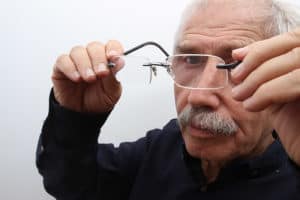In a world that’s increasingly aware of the environmental consequences of our choices, every decision we make as consumers matters. From the food we eat to the products we use, each choice can have a significant impact on the planet. That extends to our eyewear choices as well. The eyewear industry, like many others, faces environmental challenges, but there’s a sustainable solution that often goes overlooked: reglazing your glasses.
Impact of Consumer Choices on the Environment
Consumer choices play a substantial role in shaping the environmental landscape. From the cars we drive to the clothes we wear, the materials and processes used in the products we choose can have far-reaching consequences. Eyewear is no exception. When we consider the environmental impact of our glasses, it becomes evident that our choices matter.
Environmental Issues Related to the Eyewear Industry
The eyewear industry, while providing us with essential tools for clear vision and eye protection, is not exempt from contributing to environmental issues. Here are some of the significant environmental challenges associated with the eyewear industry:
- Landfill Accumulation of Discarded Glasses: Millions of pairs of glasses are discarded each year, and most of them end up in landfills. These glasses, often made of non-biodegradable materials, can take centuries to decompose fully.
- Non-Biodegradable Materials Used in Frames: Many eyeglass frames are constructed from plastic and metal materials that do not readily biodegrade. As a result, they persist in the environment, contributing to pollution and resource depletion.
- Harmful Chemicals in Lens Coatings: Some lens coatings contain harmful chemicals that can leach into the environment, posing a risk to ecosystems and water sources.
- Excessive Packaging Waste: Eyeglasses typically come with excessive packaging, including plastic cases and cardboard boxes. This packaging often ends up in landfills or incinerators.
- Energy-Intensive Manufacturing Processes: The production of eyewear, especially from virgin materials, requires significant energy consumption. This contributes to greenhouse gas emissions and climate change.
- Transportation-Related Emissions: The global supply chain for eyewear involves transportation across long distances, contributing to emissions from vehicles and aircraft.
- Water Pollution from Production Runoff: Eyewear manufacturing can involve processes that produce wastewater containing pollutants, potentially harming aquatic ecosystems.
Statistics and Facts About the Waste Generated by Discarded Glasses
To grasp the scale of the issue, consider this: approximately 12 million pairs of glasses are discarded in the United States each year, according to the American Academy of Ophthalmology. Globally, that number is even more staggering. These glasses often end up in landfills, where they take up valuable space and contribute to environmental problems.
Comparison of Different Eyewear Materials and Their Environmental Implications
The materials used in eyewear frames vary widely in their environmental impact. Let’s take a closer look at some of the most common materials used and their implications:
- Plastic Frames: Many eyeglass frames are made from various types of plastic, including acetate and cellulose acetate. While these materials are lightweight and durable, they are derived from petrochemicals and can take centuries to decompose in landfills.
- Metal Frames: Metal frames, typically made from alloys like stainless steel or titanium, have a lower environmental impact than plastic frames. They are recyclable and can be repurposed into new products.
- Wood Frames: Wooden frames, although less common, offer a more sustainable option. They are biodegradable and can be made from sustainably sourced wood.
- Recycled Materials: Some eyewear brands are now using recycled materials, such as recycled plastics or metals, to create frames. This approach reduces the demand for virgin resources and minimises waste.
7 Reasons Reglazing Is Environmentally Friendly
Now that we’ve explored the environmental challenges in the eyewear industry, let’s delve into why reglazing your glasses is an environmentally friendly and sustainable choice. Reglazing, the process of replacing lenses in your existing frames, offers several significant benefits for the environment:
- Reduces Plastic Waste
When you reglaze your glasses, you’re keeping your frames out of landfills. This means less plastic waste accumulating in our environment.
- Decreases Energy Consumption
Reglazing uses significantly less energy compared to manufacturing new frames from scratch. The process involves removing and replacing lenses, preserving the frame and reducing the need for energy-intensive production.
- Promotes Recycling
Reglazing encourages recycling by extending the life of your frames. Instead of discarding them, you’re reusing and recycling materials, which is a core principle of sustainability.
- Lowers Carbon Emissions
By avoiding the production of new frames, reglazing reduces the carbon emissions associated with manufacturing, transportation, and disposal.
- Preserves Natural Resources
Reglazing conserves natural resources like plastic and metal, reducing the demand for raw materials.
- Minimises Water Usage
Unlike manufacturing new frames, reglazing does not involve water-intensive processes that generate pollution.
- Supports a Circular Economy
Reglazing promotes the idea of a circular economy, where products are reused and refurbished instead of being discarded. This sustainable approach reduces waste and conserves resources.
Conclusion
In conclusion, it’s evident that our choices, even as seemingly small as selecting eyewear, have a profound impact on the environment. The challenges faced by the eyewear industry, such as accumulating discarded glasses and the use of non-biodegradable materials, necessitate a shift towards sustainable practices.
Reglazing your glasses emerges as a powerful solution in this environmental equation. By choosing to reglaze with Reglaze 4 U, you actively participate in environmental conservation. Our services focus on reducing plastic waste, lowering energy consumption, and supporting recycling efforts. We specialise in reglazing various frames, including Oakley and wrap-style frames, with high-quality lens options, including single vision, bifocal, varifocal, glass lenses, and sunglasses.
Ready to make an eco-conscious choice? Take a step towards sustainability by reglazing your glasses with Reglaze 4 U. Preserve your favourite frames, reduce your carbon footprint, and contribute to a greener tomorrow.
Contact us at 0161 511 2461 or email us at info@reglaze4u.com to explore our reglazing services. Let’s protect our planet, one pair of glasses at a time, and shape a future where both clear vision and environmental responsibility coexist harmoniously. Your decision today creates a sustainable legacy for tomorrow.





